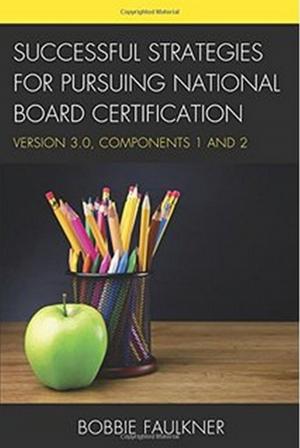Cataloging Library Resources
An Introduction
Nonfiction, Reference & Language, Language Arts, Library & Information Services| Author: | Marie Keen Shaw | ISBN: | 9781442274877 |
| Publisher: | Rowman & Littlefield Publishers | Publication: | January 26, 2017 |
| Imprint: | Rowman & Littlefield Publishers | Language: | English |
| Author: | Marie Keen Shaw |
| ISBN: | 9781442274877 |
| Publisher: | Rowman & Littlefield Publishers |
| Publication: | January 26, 2017 |
| Imprint: | Rowman & Littlefield Publishers |
| Language: | English |
While there are many cataloging texts, very few are written specifically for library support staff. This is the one and only book purposefully aligned with the new American Library Association – Library Support Staff Certification (LSSC) competency standards for Cataloging and Classification.
Written in clear language by someone who teaches cataloging in a library support staff program and featuring practical examples, Cataloging Library Resources: An Introduction will help library support staff become effective catalogers. Other books on this topic are written for professional librarians rather than support staff. And although 85% of library support staff do not hold professional degrees, many are expected to do the complex and technical work of catalogers. This book provides many examples that support staff can use to learn how to catalog all types of library print, media, and digital materials using the most up-to-date Library of Congress standards.
Using this handbook as a guide, readers will be able to perform the ALA-LSSC cataloging and classification competencies and the new RDA, FRBR, and BIBFRAME standards listed below:
• Apply and manage the appropriate processes, computer technology, and equipment for cataloging and classification.
• Apply principles of Resource Description and Access (RDA) and the Functional Requirements for Bibliographic Records (FRBR) when creating cataloging records.
• Apply principles of the Bibliographic Framework Initiative (BIBFRAME) and utilize the BIBFRAME model to create cataloging records.
• Use the basic cataloging and classification tools, both print and online, including bibliographic utilities and format standards.
• Understand the value of authority control and its basic principles, and can identify and apply appropriate access points for personal names, corporate bodies, series, and subjects.
• Explain the value and advantages of cooperative or collaborative cataloging practices to enhance services.
• Know the basics of standard metadata formats and cataloging rules to select, review, and edit catalog records, and to generate metadata in various formats.
• And more!
While there are many cataloging texts, very few are written specifically for library support staff. This is the one and only book purposefully aligned with the new American Library Association – Library Support Staff Certification (LSSC) competency standards for Cataloging and Classification.
Written in clear language by someone who teaches cataloging in a library support staff program and featuring practical examples, Cataloging Library Resources: An Introduction will help library support staff become effective catalogers. Other books on this topic are written for professional librarians rather than support staff. And although 85% of library support staff do not hold professional degrees, many are expected to do the complex and technical work of catalogers. This book provides many examples that support staff can use to learn how to catalog all types of library print, media, and digital materials using the most up-to-date Library of Congress standards.
Using this handbook as a guide, readers will be able to perform the ALA-LSSC cataloging and classification competencies and the new RDA, FRBR, and BIBFRAME standards listed below:
• Apply and manage the appropriate processes, computer technology, and equipment for cataloging and classification.
• Apply principles of Resource Description and Access (RDA) and the Functional Requirements for Bibliographic Records (FRBR) when creating cataloging records.
• Apply principles of the Bibliographic Framework Initiative (BIBFRAME) and utilize the BIBFRAME model to create cataloging records.
• Use the basic cataloging and classification tools, both print and online, including bibliographic utilities and format standards.
• Understand the value of authority control and its basic principles, and can identify and apply appropriate access points for personal names, corporate bodies, series, and subjects.
• Explain the value and advantages of cooperative or collaborative cataloging practices to enhance services.
• Know the basics of standard metadata formats and cataloging rules to select, review, and edit catalog records, and to generate metadata in various formats.
• And more!















